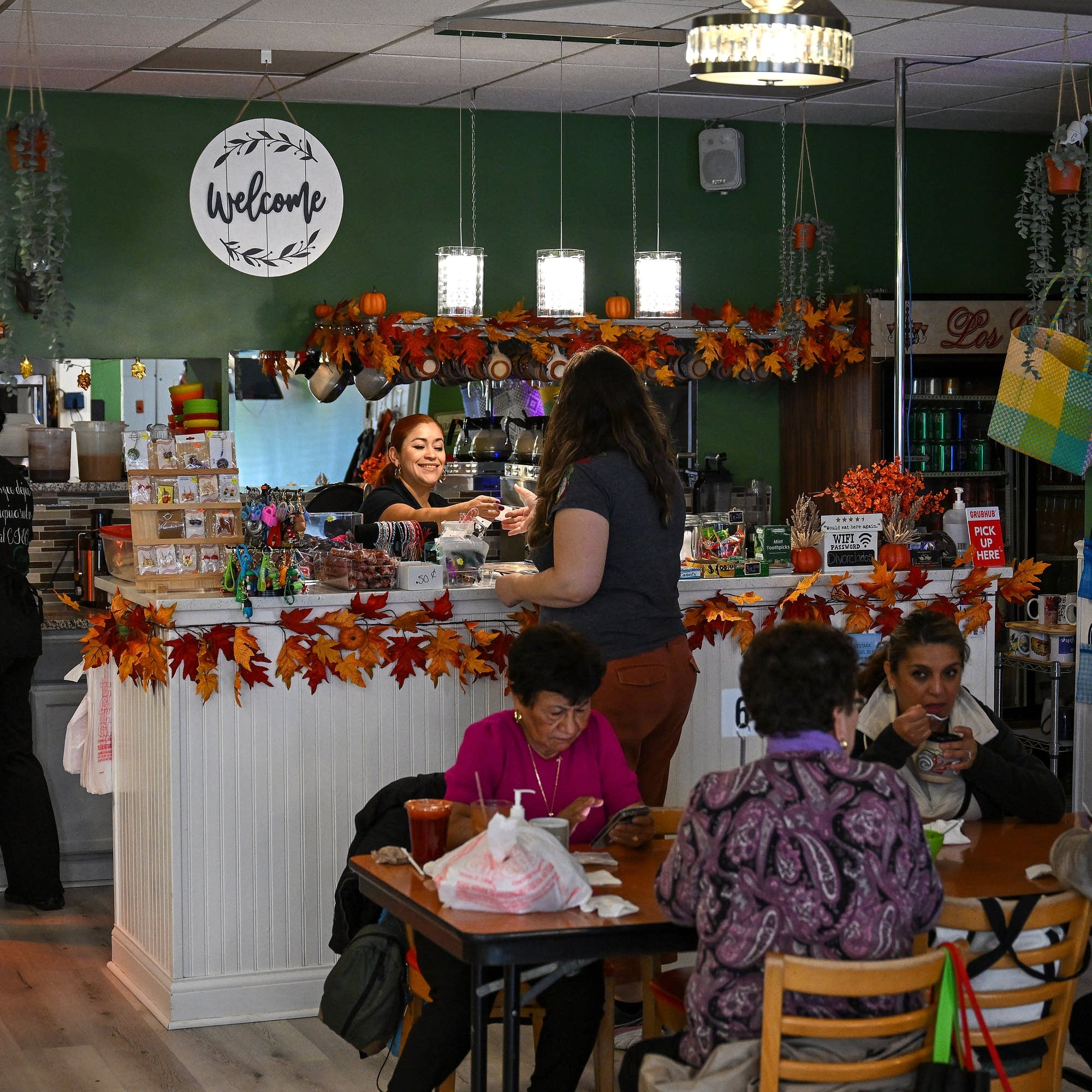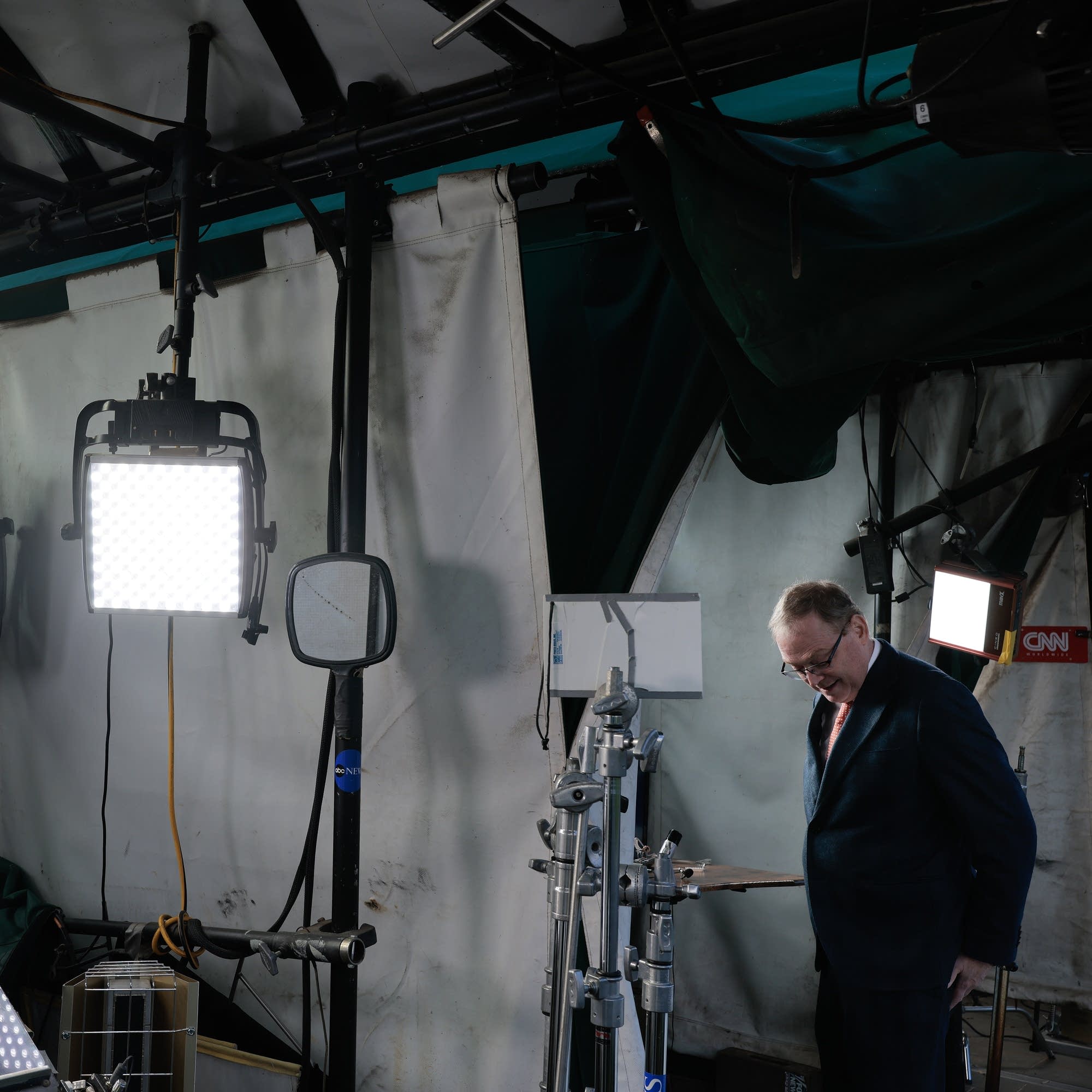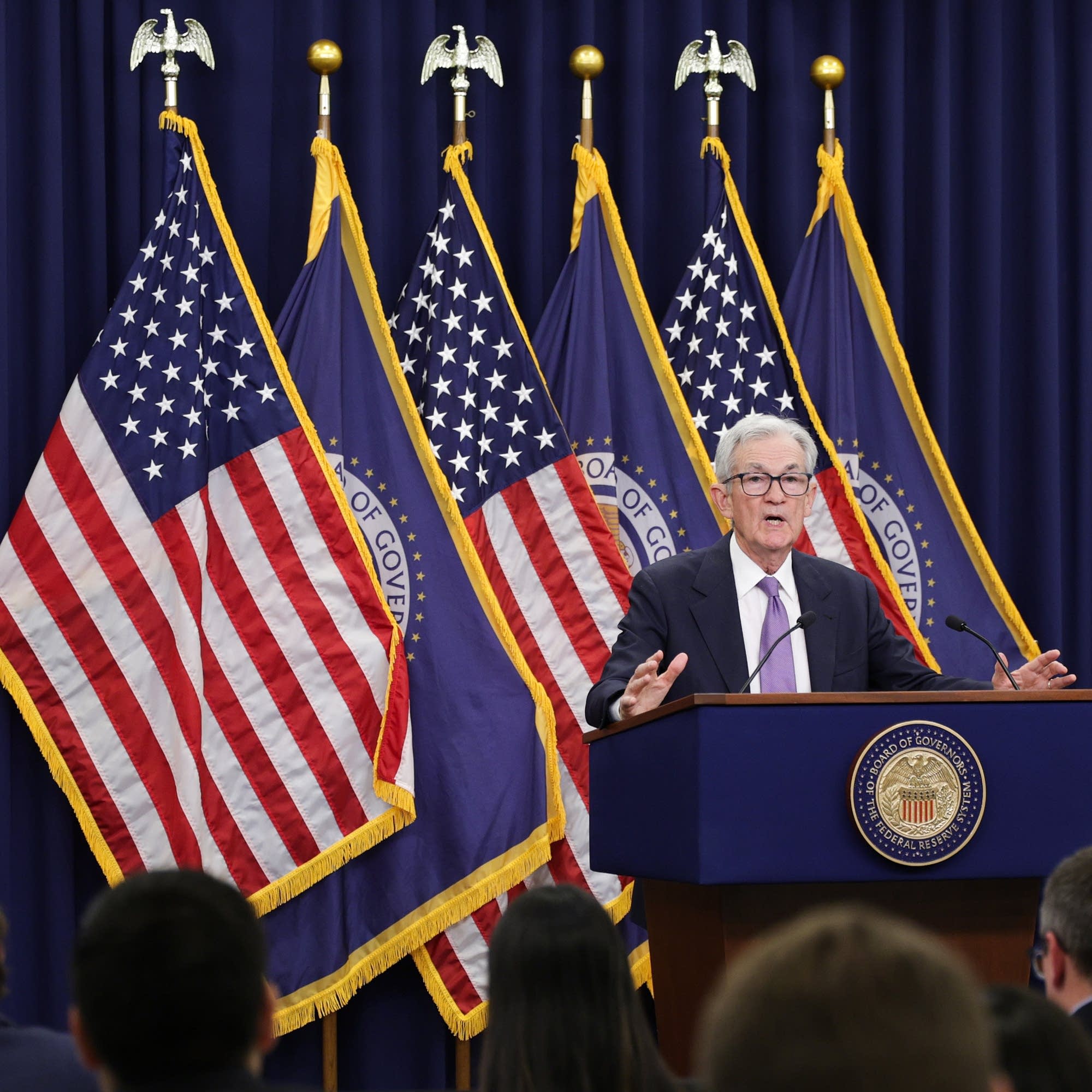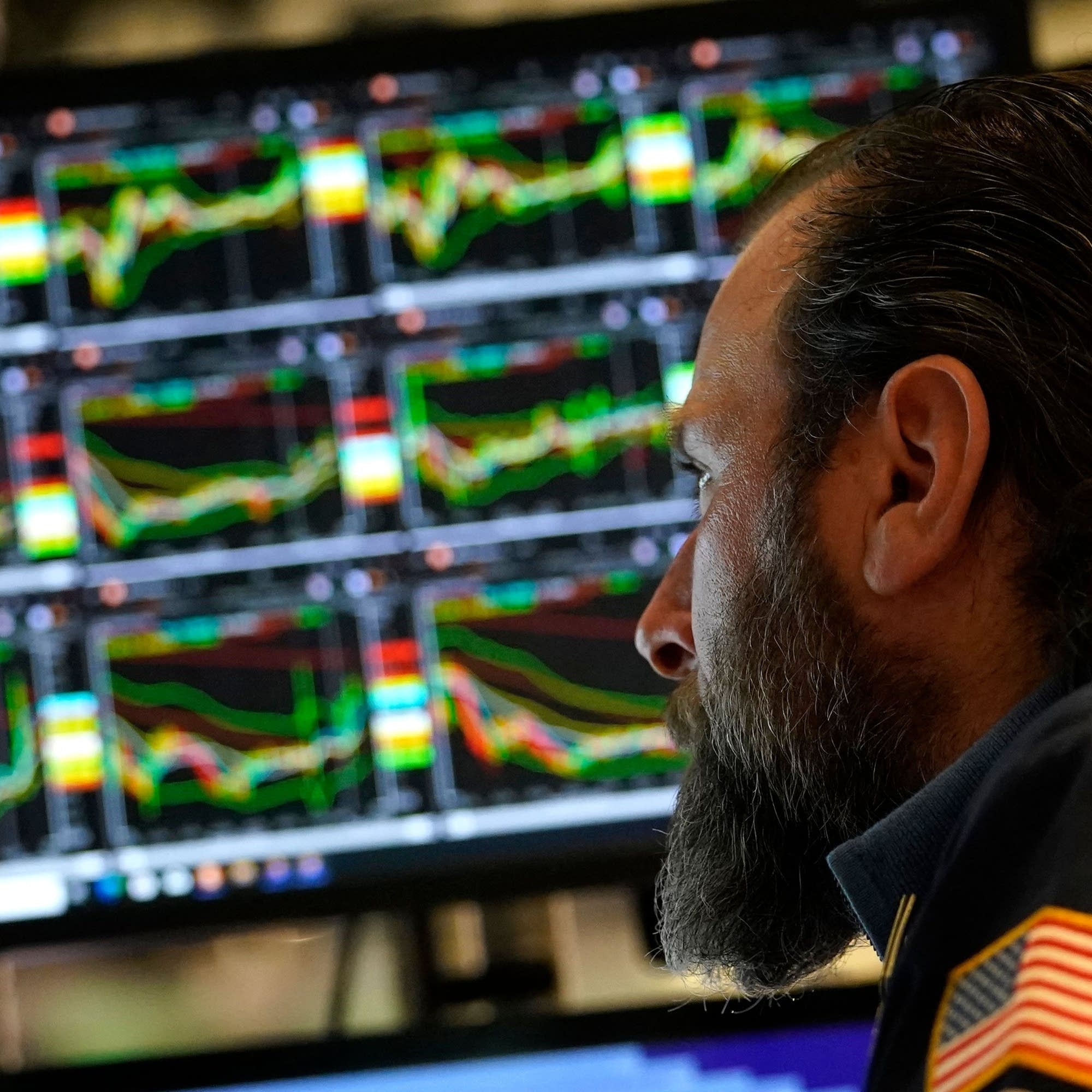The housing market is "locked in"
Pending home sales rose in August, boosted by a slight drop in mortgage rates. Overall, though, the market remains sluggish — owners don't want to give up their locked-in low rates and buyers are waiting to see if rates and other costs will cool. Also in this episode: Banks respond to the Fed rate cut, retailers prepare for holiday hiring, and tech companies hope nuclear is the answer to data center energy demand.
Every story has an economic angle. Want some in your inbox? Subscribe to our daily or weekly newsletter.
Marketplace is more than a radio show. Check out our original reporting and financial literacy content at marketplace.org — and consider making an investment in our future.
Press play and read along
Transcript
Speaker 1 Introducing your new Dell PC with the Intel Core Ultra Processor. It helps you handle a lot even when your holiday to-do list gets to be a lot.
Speaker 1 Like organizing your holiday shopping and searching for great holiday deals and customer questions and customers requesting custom things, plus planning the perfect holiday dinner for vegans, vegetarians, pescatarians, and Uncle Mike's carnivore diet.
Speaker 1 Luckily, you can get a PC with all-day battery life to help you get it all done. That's the power of a Dell PC with Intel inside, backed by Dell's Price Match Guarantee.
Speaker 1
Get yours today at dell.com/slash holiday. Terms and conditions apply.
See Dell.com for details.
Speaker 3 This podcast is supported by Odo. Some say Odoo business management software is like fertilizer for businesses because the simple, efficient software promotes growth.
Speaker 3 Others say Odo is like a magic beanstalk because it scales with you and is magically affordable.
Speaker 3 And some describe Odoo's programs for manufacturing, accounting, and more as building blocks for creating a custom software suite. So Odoo is fertilizer, magic beanstock building blocks for business.
Speaker 3 Odoo, exactly what businesses need. Sign up at odoo.com.
Speaker 1 That's odoo.com.
Speaker 4 Planning for the future and actually putting those plans into motion? It's pretty tricky when the economy looks foggy. From American Public Media, this is Marketplace.
Speaker 4
In New York, I'm Kristen Schwab in for Chi RizDahl. It's Monday, the 29th of September.
Good to have you along.
Speaker 4 The theme of today's show is stillness, the thing that happens in the economy when it's hard for businesses and consumers to figure out what's happening in the economy. We'll start with housing.
Speaker 4 Now, the housing market has picked up a bit after mortgage rates inched down this summer from a high nearing 7%.
Speaker 4 Today, the National Association of Realtors reported a 4% increase in pending home sales in August, with gains in the Midwest, South, and West.
Speaker 4 But that is by no means a housing frenzy because there are some big factors keeping the market in a holding pattern. Marketplace's Elizabeth Troval has more.
Speaker 5 When mortgage rates came down, the excitement in the Twin Cities real estate market was modest. Patty Joe Fitzpatrick is with Minnesota Realtors.
Speaker 6 Say, I was able to do a second showing for a buyer recently, which, you know, in the last number of years, that would have been a total luxury.
Speaker 5 So her buyers got to see the property a whole two times before putting in an offer.
Speaker 6 That was kind of nice.
Speaker 5 Fitzpatrick says there's a smidge more inventory out there thanks to the lower cost of borrowing. But the other costs of owning a home have gone up.
Speaker 6 So your energy costs, your insurance costs.
Speaker 5 The Midwest saw the most gains from lower rates, says Lawrence Yoon with the National Association of Realtors.
Speaker 7 Americans are very concerned about affordability. So in markets where homes are affordable, they're more readily able to respond.
Speaker 5 The average rate for a 30-year fixed mortgage is now 6.3%,
Speaker 5 way higher than what Julia Fonseca got when she bought a house.
Speaker 6 My rate is 2.125 on a 15-year fixed.
Speaker 6 So, that is pretty hard to give up still.
Speaker 5 Fonseca, who's with University of Illinois at Urbana-Champaign, says roughly 80% of borrowers are in the same boat. If they bought the same house today, they'd pay way more.
Speaker 6 These higher rates have really meaningfully deterred borrowers from moving.
Speaker 5 Researchers like her and Kyle Mangum with the Philadelphia Fed are still trying to understand what this new lock-in dynamic means for home prices and mobility, because for decades, rates were generally inching down.
Speaker 7 My parents' generation would talk about double-digit mortgage rates. And really, since then, it's been a long-term downward trend.
Speaker 5 Now we're in a new normal where people are buying or selling their homes because they have to for jobs to downsize as life happens.
Speaker 5 I'm Elizabeth Troval for Marketplace.
Speaker 4 Today on Wall Street, a possible government shutdown hasn't shaken traders, at least for now. We'll have the details when we do the numbers.
Speaker 4 Speaking of housing and mortgage rates, it's been about a week and a half since the Federal Reserve cut the federal funds rate by a quarter of a percent, which means in theory, that lower rate should be starting to work its way through the economy.
Speaker 4 The thing is, the Fed's actions don't work like a light switch.
Speaker 4 The lenders that actually set interest rates on the loans and savings accounts that affect businesses and consumers, they are several steps removed from the Fed.
Speaker 4 Marketplace's Justin Ho called up a few banks to see what they've been up to since the rate cut.
Speaker 9 Banks offer several types of loans, with rates that adjust almost immediately after a Fed rate cut.
Speaker 7
That would be a line of credit. That could be an equity line on your house.
That would be your credit card.
Speaker 9 Nathan Roggy is the CEO of First Pacific Bank in Southern California. He says it does a lot of lending to small and medium-sized businesses, and those lines of credit have already gotten cheaper.
Speaker 7 That probably represents about a third of our portfolio. So it's definitely not insignificant if a third is going to move pretty quickly.
Speaker 9 But Roggy says the bank hasn't seen demand for loans pick up in the last week. In fact, he says demand has been fairly subdued all year.
Speaker 9 Roggy says that's partly because many business owners are nervous about loading up on debt when the economy is still so uncertain.
Speaker 9 But it's also because rates are still four percentage points higher than they were just a few years ago.
Speaker 7 I have heard from clients, you know, I'll do this when rates go down.
Speaker 7 Now, how far down is, I think they imagine back to pre-2022. That's a long ways to go to see those sorts of changes.
Speaker 9 Banks also have an incentive to keep rates on loans where they are. Chris Duncan is chief lending officer at LaSalle State Bank in Illinois.
Speaker 9 He says it uses interest payments on loans to pay interest to its depositors. And interest rates on the bank's savings accounts and CDs haven't dropped.
Speaker 10 Until those kind of come down and there's a little bit more margin there between those deposits and what we're lending out, I think banks are reluctant at this point to reduce a lot of their rates.
Speaker 9 Duncan says those deposit rates he's paying haven't dropped much because banks face steep competition. Since so much banking happens online, he's up against competitors across the country.
Speaker 10 If they continue to keep their interest rates on their deposit offerings higher, then it doesn't necessarily make good sense from a competition standpoint for us to lower our rates immediately.
Speaker 9 Banks also want their deposit rates to stay competitive in order to keep their customers happy.
Speaker 9 Dominic Miartin, the CEO of American Pride Bank in Macon, Georgia, it's still paying the same rate on high-yield checking accounts as it did before the Fed made its move.
Speaker 7 We want to focus on building those relationships. And those are the relationships we're willing to pay the most for.
Speaker 9 Mjartin says the bank knows it can't keep paying its depositors high rates forever if the Fed keeps cutting.
Speaker 9 But he says if it can establish a strong relationship with depositors, the hope is they'll stay loyal.
Speaker 7 You know, you will be able to reduce that rate, and the customer is so invested.
Speaker 7 in that relationship that they're not going to be very rate sensitive to the point where they would go shop their loan around or move their deposit accounts around.
Speaker 9 Loyal customers might be more willing to pay the bank fees for the business services it offers.
Speaker 7 We charge fees for complex, intense services that require lots of technology or lots of people time and a lot of intense relationship management with that customer.
Speaker 9 Mjartin says as the Fed continues to cut interest rates, the bank's going to have to rely more on income from those fees. I'm Justin Howe for Marketplace.
Speaker 4 For something like half a year now, I've been following a group of people across the country from California, Texas, Minnesota, New Hampshire, people from different backgrounds living different financial realities to document how they navigate this uncertain economic moment.
Speaker 4 The series is called Lived Economies, and one of the people I'm following is Catherine Thompson, a retired nurse.
Speaker 4 I visited her and her husband Bill on Long Island this summer, and I caught up with Catherine last week. Here's that conversation.
Speaker 12 Hi, Kristen. How are you?
Speaker 4 I'm good. How have you been?
Speaker 12 I've been very well because I'm a volunteer at the Ryder Cup this week as a grandstand marshal, and I've been having a ball.
Speaker 4
Very fun. That's a fun end of summer start to fall stamp.
Well, tell me about how you, what you, you and Bill have been up to since we last talked this spring.
Speaker 12 So, not a whole lot different.
Speaker 12
We traveled out to see a wedding out in San Diego. My niece got married, and her husband is a pilot out there.
He flies the Osprey. And then, really, just
Speaker 12 for Social Security's 90th anniversary, I was on the double-decker bus down in Times Square with all of the staff from New York State.
Speaker 1 So
Speaker 12 yes, so staying very busy with that, but obviously took time off to do the volunteering at the Ryder Cup. So, but not a whole lot different as far as what we're personally spending time on.
Speaker 4
Gotcha. Still volunteering, still traveling.
Is Bill woodworking?
Speaker 12 He is still doing his woodworking downstairs. We're actually building a swing for our grandkids who are going to spend a couple of weeks out here with us around Thanksgiving.
Speaker 12 So, yeah, little things like that.
Speaker 4 Oh, that's so nice.
Speaker 4 Well, so it sounds like things are still
Speaker 4 going well. I mean, last time we talked, things were pretty stable for you all.
Speaker 4 You were traveling.
Speaker 4 You said you were kind of doing these things without a total tight budget. How has the economic outlook changed for the two of you at all? Are you still kind of riding steady?
Speaker 12 The outlook for us has not changed significantly, although I have been really kind of surprised at the still increased in the prices of food.
Speaker 12 I mean, hamburger, chopped meat, it's, you know, unbelievable right now. And even fresh fruit and fresh vegetables are really climbing in price.
Speaker 12 But for us personally, I think the biggest thing we are worried about is really the electric rates because
Speaker 4 we were
Speaker 12 thinking we were doing, of course, the right thing. We've had solar on the roof for years now and that's really been a benefit.
Speaker 12 But, you know, we do have the electric car now and, you know, these rates that are going to go up, I think that's going to really impact us over the next year or two.
Speaker 4 You mentioned your two sons. They're in their 30s, right?
Speaker 12 Yes.
Speaker 4 How are they doing? And what is it like to kind of watch them move through the economy right now?
Speaker 12 So my son out in New Mexico is really pushing to get solar on his roof. Unfortunately, because it's an older house, he has to get a whole new roof, which of course is very expensive.
Speaker 12 And I would say my younger son here in Long Island, his biggest concern going forward is getting a family health care plan because they really would like to start a family.
Speaker 12 And, you know, that, of course, some of the different plans, even in the marketplace, don't really cover all the maternity services that you need.
Speaker 12
So, you know, you have to keep going up a grade or two to get all of those services covered. So those decisions will definitely be happening with my young son in the next year or so.
So yeah,
Speaker 12 I think that's the
Speaker 12 you know, obstacles that they're facing.
Speaker 4 Yeah, you talked about some of your concern about for their sons and their generation the last time we talked.
Speaker 4 And I'm wondering, you know, as we continue to move through the year, what it's like to have these conversations with them and live in kind of, I guess, different financial worlds.
Speaker 12 So, one of the biggest things that I'm finding with,
Speaker 12 you know,
Speaker 12 some of my nieces and nephews and friends of my, you know, children of my friends is the housing. That is the biggest detriment
Speaker 12
for them to start to try to get a starter home. On Long Island, here where we live, there's very few what we would call starter homes.
And there's not really the available condos.
Speaker 12 So they're stuck in this rental problem, which, you know, their rents are, you know, $2,800 to $3,400 a month. And that's a huge issue for them.
Speaker 12 On the flip side, we have friends our age age that have never owned.
Speaker 12 And so they're still in a rental situation where they are very, very dependent on their social security and increases in their social security in order to maintain the rental that they have.
Speaker 12 And they're getting outpriced because so much of the real estate market, particularly the apartments, are corporate owned.
Speaker 12 And it's, you know, it's really on the rise here for people my age and older that, um, you know, didn't own a home and don't have that nest egg or
Speaker 12 wealth to fall back on.
Speaker 4 Looking at the rest of the year, how are you feeling about what's ahead and any big plans?
Speaker 12 No, really big plans. You know, as I say, the grandkids are coming out, so that'll be nice.
Speaker 12 I'm incredibly
Speaker 12 worried about the possibility of a government shutdown. And I,
Speaker 12 you know, particularly around here where we do have a lot of, you know, people that are reliant on civil service, maybe not so much from the federal government, but certainly through state and local governments, which all filters down.
Speaker 12 So that, that, that's probably my biggest concern. But as far as what I'm looking forward to is having my grandkids go.
Speaker 4
It's a good thing to look forward to. Yes, it is.
Catherine Thompson lives in Long Island, Island, New York.
Speaker 4 Her and her husband, Bill, are two of the people we're following in our series, Lived Economies. Catherine, thanks for catching up.
Speaker 12 Thank you so much for calling.
Speaker 4 Coming up.
Speaker 14 This is a 10-year solution for a 24-month, three- to five-year problem.
Speaker 4 The role of nuclear power as energy demands rise. But first, let's do the numbers.
Speaker 4 The Dow Jones Industrial Average rose 68 points, a little over a tenth of a percent, to finish at 46,316. The NASDAQ added added 107 points, half a percent, to close at 22,591.
Speaker 4 And the SP 500 gained 17 points, a quarter percent to end at 66.61.
Speaker 4
Now it's foreign-made movies that the president wants to tax. A 100% tariff, he said on social media.
The White House hasn't provided any details on how that would work.
Speaker 4
Wall Street seems to have shrugged it off. Walt Disney pocketed a little over 1.1 tenth percent.
AMC Entertainment holdings rang up 3.8 tenths percent. Netflix dipped a third of a percent.
Speaker 4 OpenAI announced it's partnering with Etsy and Shopify to provide instant checkout to shoppers who use ChatGPT at those sites. Etsy rang up 15 and 8 tenths percent, Shopify added 6.25%.
Speaker 4 Bonds rose, the yield on the 10-year T-note fell to 4.14%.
Speaker 4 You're listening to Marketplace.
Speaker 1 Recruitment.
Speaker 8 In finance, it can feel transactional, driven by numbers, not by nuance, lacking the personal touch that fuels performance. LHH believes it should be more.
Speaker 8 By connecting people to opportunity, not just skills to roles.
Speaker 8
Beautiful things happen in finance. A leader drives growth.
A team finds clarity in complexity. The people you hire become the people you rely on.
Making 90,000 hours in a career well invested.
Speaker 8 Recruitment, development, career transition, LHH, a beautiful working world for the world of finance. Discover recruitment solutions today at LHH.com slash beautiful.
Speaker 2 This Marketplace podcast is sponsored by the University of Illinois Geese College of Business. For many, the next step in their career is an MBA, but finding the time and budget can be a challenge.
Speaker 2 The University of Illinois Geese College of Business offers their online MBA, the IMBA. It's fully online, flexible, and delivered at a fraction of the cost of a traditional MBA.
Speaker 2 Students get the same world-class Illinois faculty and an interactive global network all designed to fit their lives. To learn more about the Geese IMBA, visit online MBA.illinois.edu.
Speaker 2 That's online MBA.illinois.edu.
Speaker 15 This Marketplace podcast is supported by Justin Wine. Get the celebration ready with Justin Wine.
Speaker 15 Since 1981, Justin has been producing world-class Bordeaux-style wines from Paso Robles on California's Central Coast.
Speaker 15 Justin offers curated gift sets, library wines, magnums, and even custom-etched bottles. Visit justinwine.com and enter Market 20 for 20% off your order.
Speaker 15 Justin offers the perfect holiday gifts for clients, colleagues, friends, or family. Be sure to check them out at justinwine.com to receive 20% off your order for a limited time.
Speaker 4 This is Marketplace. I'm Kristen Schwab.
Speaker 4 One bullet point on the list of economic uncertainties is the labor market. But we'll get a lot of data this week that will hopefully bring more clarity to that piece of the economic picture.
Speaker 4 Tomorrow we get the Job Openings and Labor Turnover Survey, or JOLTS from the Bureau of Labor Statistics. Then, if there is no government shutdown, we'll get the all-important jobs report on Friday.
Speaker 4 These numbers are all coming out as we head into the final quarter of the year, a peak time for seasonal hiring. Marketplace's Daniel Ackerman looks at how staffing up for the holidays is shaping up.
Speaker 16 You might wince at the thought of holiday shopping in September, but Ron Hetrick, an economist with the employment data firm Lightcast, says says retailers have no choice but to plan for it.
Speaker 17 They have to make sure that all the inventory is in and aligned and everything's getting set up well in advance of the actual holidays.
Speaker 16 And Hetrick says, even though some big retailers haven't announced staffing plans yet, he thinks hiring will hold up okay because consumer spending is holding up okay.
Speaker 17
Retail sales have been great. I mean, they're not on a free fall.
They're not even close. New orders have been very good.
Shipments have held up very, very well.
Speaker 17 Hetrick says, even though spending has been driven by wealthier consumers, it's still a market that has goods and it has people that are buying goods.
Speaker 16 Still, retailers, like the rest of us, are facing a lot of uncertainty with tariff policy changing like the weather. Alison Trivastov is an economist with Indeed.
Speaker 18 Messaging is pretty mixed and we're not sure where things are headed. That uncertainty makes it really, really hard to plan.
Speaker 16 So Trivastov says retailers may wait longer than usual before posting those seasonal job openings.
Speaker 18 That's kind of the theme of 2025 is everybody just holding off for as long as they possibly can and making any kind of decision.
Speaker 16 Even if consumers do spend big this holiday season, Nitin Jen, managing director with Alex Partners, says that spending will be because things are getting more expensive.
Speaker 19 The growth that we are forecasting for the holiday is driven more by price inflation.
Speaker 16 and not by shoppers actually buying more stuff. Jen says that could mean fewer jobs available than in years years past.
Speaker 19 The hiring is directly proportionate to the number of units that they are expecting to sell. And we think that the number of units is going to be historically low.
Speaker 16 Jen expects the trend of lower seasonal hiring to continue in future years as retailers invest more in online sales and automation. I'm Daniel Ackerman for Marketplace.
Speaker 4 As I mentioned, we'll get new employment data tomorrow with the Jolts report. For quick context on that, sign up for our free daily rap newsletter.
Speaker 4 It brings all the day's news and numbers straight to your inbox every weekday evening. It'll take you less than five minutes to catch up.
Speaker 4 Read the latest edition and sign up at marketplace.org slash subscribe.
Speaker 4
Once upon a time, nuclear power was hailed as the energy of the future. But for decades now, it has actually been in decline.
There are a whole bunch of reasons why.
Speaker 4
Reactors are expensive to build and maintain. The permitting permitting process is long and tedious.
And we don't have a good solution for what to do with nuclear waste.
Speaker 4 But suddenly, nuclear power is seeing a rush of new interest, both here and abroad. Marketplace's senior Washington correspondent Kimberly Adams explains why.
Speaker 13 The U.S. and the UK just announced a new nuclear partnership.
Speaker 13 The Three Mile Island nuclear power plant is set to restart in a few years, thanks to Microsoft, and other big tech companies are plowing money into new nuclear startups.
Speaker 14 The single biggest driver in the paradigm shifts we're seeing right now in the power sector comes down to data centers.
Speaker 13 Jackson Morris is at the Natural Resources Defense Council.
Speaker 14 That load growth for electricity that we had already forecasted is now coming 10 years sooner and five times as fast because of data centers.
Speaker 14 And these facilities largely being built by the big hyperscalers like Amazon, Google, Microsoft, et cetera.
Speaker 13 In the last few years, dozens of countries have pledged to triple nuclear capacity by 2050, and many of them are focused on what are called small modular reactors, or SMRs.
Speaker 13 Their proponents say they'd be cheaper and faster to build and cheaper to operate than the reactors we've had for decades, and they could be produced at scale in factories rather than custom-built on-site.
Speaker 13 But SMRs still generate nuclear waste, Morris says.
Speaker 14 And they still have a significant public health and safety risk that needs to be managed by an independent, strong regulator.
Speaker 20 And while there are lots of companies working on developing SMRs, none of them have been demonstrated, except for one in Russia and one in China at great expense.
Speaker 13 Allison McFarlane is at the University of British Columbia and was the chairman of the U.S. Nuclear Regulatory Commission in the Obama administration.
Speaker 13 She says when it comes to SMRs in the United States, the reactors don't exist.
Speaker 20 And as a result, we don't know if they're going to be cheaper, smaller, safer, present less of a nuclear weapons proliferation risk.
Speaker 20 Until you actually build these things, you have no idea about any of those.
Speaker 13
That's where big tech is stepping in. Google is partnering with an SMR startup to get the tech online for its data centers.
And Amazon is trying to get SMR tech out of the lab and onto the grid.
Speaker 21 Our goals in investing here are really to prove out that model, help support a technology to scale.
Speaker 13 Patrick Leonard is the global energy principal at Amazon Web Services.
Speaker 13 He says his company doesn't want to develop the technology itself, so it's promising to buy whatever energy SMRs might produce in order to help projects get financing.
Speaker 21 And for everyone to see some initial successes, and then longer term,
Speaker 21 Amazon will be able to transition to that role where we're really buying the energy the same way you buy any other form of energy through a utility or another supplier from the grid.
Speaker 13 But all of this is going to take a long time.
Speaker 13 The Trump administration is promising to speed up permitting, but Jackson Morris of the Natural Resources Defense Council points out that the energy demands from data centers are growing even faster.
Speaker 14 Even the most bullish developers will acknowledge this is a 10-year solution for a 24-month, three-to-five-year problem.
Speaker 13 Skeptics of going all in on SMRs, including former nuclear commissioner Allison McFarlane, say the money and effort being spent on this could be better used elsewhere.
Speaker 20 There are renewable technologies, wind, utility scale, solar, PV, that are far cheaper than nuclear will ever be, and they exist right now.
Speaker 13 And while the tech Titans and other countries are still investing in those renewable options, at least when it comes to the federal government here in the U.S., they just fell way down the priority list while nuclear power is rising.
Speaker 13 In Washington, I'm Kimberly Adams for Marketplace.
Speaker 4 This final note on the way out today, saw this on CNN. Since every day is a national something day, today is National Coffee Day.
Speaker 4 And whether you buy it out or make it at home, if you've noticed the price for a cup has gone way up, you are not wrong.
Speaker 4 Part of this is climate change, but more immediately, virtually all coffee, 99% of it consumed in the U.S., is imported. So, tariffs.
Speaker 4 Brazil, a top source of our coffee, is one of the most heavily tariffed countries at 50%.
Speaker 4 The price of coffee, according to the latest Consumer Price Index, has jumped more than 20% in the last year. If you're looking for an alternative, tea is up less than 2.5%.
Speaker 4 I remain Team Coffee, unfortunately. Amir Babawi, Caitlin Ech, John Gordon, Noia Carr, Amanda Peacher, and Stephanie Seek are the marketplace editing staff.
Speaker 4 Kelly Silvera is the news director, and I'm Kristen Schwab. We'll see you back here tomorrow.
Speaker 4 This is 8 p.m.
Speaker 22 This week on Million Bazillion, Ryan and I are off to a sleepaway camp for podcasters, where we meet up with some other podcast friends for a very special episode about animals and money.
Speaker 22 Together, we're going to tackle some very important questions like what animals should be in charge of the economy.
Speaker 23 Well, like I said, there's plenty of crossover between the animal kingdom and your world of money.
Speaker 11 Don't miss this special episode. Listen to Million Bazillion on your favorite podcast app.





